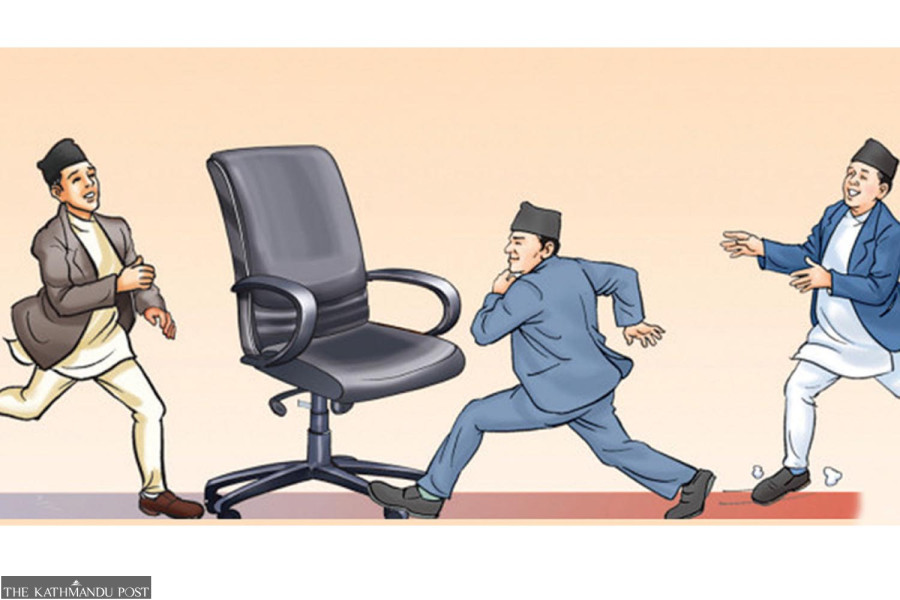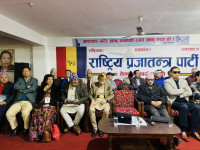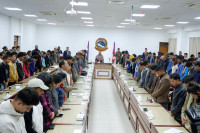Politics
Instability built into the composition of federal House
With the ruling coalition dependent on small parties, next 5 years could see making and unmaking of governments.
Binod Ghimire
Efforts for the formation of the federal government have commenced even before the conclusion of the vote count. As the five-party alliance seems to be short of a few lawmakers to form a coalition government, Prime Minister and Nepali Congress President Sher Bahadur Deuba and his electoral partners have started reaching out to the newly-emerged regional parties.
On Saturday evening, the Congress had won 56 seats and was leading in one other constituency under the first-past-the-post system. The party is likely to bag an additional 32 seats of proportional representation. The CPN (Maoist Centre) has won 17 seats in the FPTP and is leading in one more constituency. It would add 14 seats from the proportional representation.
Other three parties in the alliance—CPN (Unified Socialist), Loktantrik Samajbadi Party and Rastriya Jamorcha—have won 10, four and one seats respectively, in direct elections. These parties, however, are unlikely to cross the three-percent threshold to be eligible to earn proportional representation seats.
Against the 138 seats needed to form the government, the five-party alliance seems to have 134, four short of the magic number. The Congress and the Maoist Centre are leading in one seat each, as vote counting continues in Dolakha and Bajura. As Congress lawmaker-elect from Manang Tek Bahadur Gurung faces corruption charges, he cannot assume the role of lawmaker. The ruling alliance will still be short of three seats for a majority, even if the Congress and Maoist Centre win the seats still being contested. (This is again assuming the Maoist Centre will not in the end ditch the ruling coalition.)
Currently, the Congress, the Maoist Centre and the Unified Socialist are trying to rope in the CK Raut-led Janamat Party and the Nagarik Unmukti Party led by Ranjita Shrestha, wife of Resham Chaudhary (who was elected to the House in 2017 despite being charged with the killings in the 2015 Tikapur incident).
CPN-UML, which will be the second largest party in the federal parliament (having already secured 78 seats), is trying to stitch together its own coalition. It has already sent feelers to the Maoist Centre, with UML chair KP Sharma Oli, seemingly even ready to accept Maoist chair Pushpa Kamal Dahal as prime minister with immediate effect. Though the odds against such a coalition are low right now, it is not beyond the realm of possibility. But even in this case, the second and the third largest parties will have to secure the support of at least two or three other parties to form the government.
In the view of political experts, the composition of the House of Representatives is suggestive of unstable governments. “The more the number of parties in government, the greater the chances of instability,” Ram Krishna Tiwari, a professor and chief of the Central Department of Political Science at Tribhuvan University, told the Post.
“The new government will have six or more parties with different political ideologies, no matter whether it is led by the Congress, the Maoist Centre or the UML.”
As no party commands a majority to form the government as per Article 76(1) of the Constitution of Nepal, the President will call on the parties to form a government under Article 76(2). The Article says that in the case when no party has a clear majority in the House of Representatives, the President appoints as prime minister a member of the House who can command a majority with the support of two or more parties.
The new coalition government will be formed pursuant to the same article. In such a government, fringe parties would have high bargaining power, lowering the stakes of big parties in the government.

“Such a coalition can break, leading to the government’s fall, even when the interests of one party are unfulfilled,” said Tiwari.
Bipin Adhikari, a professor and former dean at the Kathmandu University School of Law, said that as any coalition government that emerges from this parliament will be formed on shaky grounds, the House of Representatives could see the making and unmaking of multiple governments over the next five years.
“The election’s mandate is against the old guard of major parties,” Adhikari told the Post. “They should give up their aspirations to lead the government. If they hand over leadership to someone from the younger generation, then there could be a possibility of a stable government.”
Article 100(4) of the constitution prohibits a motion of no confidence for the first two years after the appointment of the prime minister. This means the opposition cannot maneuver to topple the government for two years.
However, that doesn’t completely shield the government from dissolution.
Article 100 (2) of the constitution says in case the political party, which the prime minister represents, is divided or a political party in the coalition withdraws its support, the prime minister must table a motion for a vote of confidence in the House within 30 days. If the government fails the floor test, it falls.
If the coalition government falls, the President can call on the largest party in Parliament to form the government as per Article 75(4). But that government too needs to prove its majority within 30 days.
If that bid fails, the President can allow any member of Parliament to form the government, if the lawmaker presents their support base as per Article 76 (5). Incumbent Sher Bahadur Deuba’s government was formed on the same basis.
In view of constitutional lawyers, the statute gives enough options for government formation with the notion that the lower house must exist so long as there is even the remotest possibility of government formation. “Constitutional provisions have been designed to discourage House dissolutions,” Mohan Lal Acharya, a constitutional lawyer, told the Post. “However, the House can be dissolved as the last resort, if attempts to form the government as per Article 76(5) fail.”




 6.12°C Kathmandu
6.12°C Kathmandu















